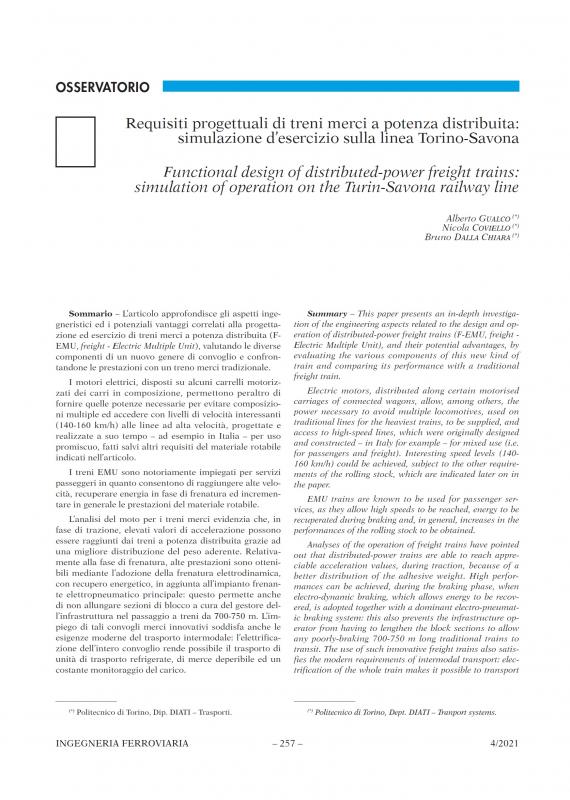
1. Introduction The rail transport offer, pertaining to goods, has basically remained unchanged – apart from just a few exceptions –since the second half of the twentieth century: wagons are still only made of steel, like those of 70 years ago, many of which have been in continuous operation for 30-40 years. In order to make rail transport more competitive and more attractive – as repeatedly requested, in part in view of the objectives that the European Union hopes to achieve by 2030 (White Paper on Transport, 2011), it will be necessary to intervene and invest in the railway infrastructure but also in the rolling stock, otherwise it will not be possible to expect or acquire a market share that is today excluded from rail transport. Moreover, it will not be possible for the existing freight trains to travel in a routine manner on high-speed lines, unless as adaptations of passenger trains, that is, with the addition of specific services. This is in fact the only serious alternative that can be considered to increase the rail traffic of goods, and it should first and foremost concern the intermodal corridors of the trans-European transport network (TEN-T) [1] [2], but also the main sea ports connected to such an infrastructure. Such interventions are aimed at increasing the transportable load capacity of each train, and allow for a number of outcomes: the possibility of carrying out remote diagnostics on both the goods and on the rolling stock; the possibility of not excluding large quantities of goods (especially if they are perishable and/or require refrigeration, such as medicines or foodstuffs); a reduction of the travel times. This may make it possible to manage the increases in demand foreseen for some nodes in the rail network. Moreover, it should be recalled that the capacity to attract demand in the transport sector, as in other sectors, is a function of the offer, and a non-competitive offer or one which is not in line with the times, although doubtlessly avoiding waste, would miss out on attractiveness and on the market The construction, maintenance and technological improvement of the infrastructures, endorsed by the manager of the railway infrastructure, should therefore proceed hand in hand with the technological evolution of the rolling stock. Through an accurate analysis of the current freight wagon fleet, as well as studies and research on innovative rolling stock, it has emerged that there is a lack of detailed and complete documentation concerning distributed-power freight trains. The research on the subject is therefore of modest extent, because of a lack of attention to and investments in freight trains, a situation that has lasted for decades. It is therefore the aim of the present document to furnish an examination of the theme, and at the same time to ask critically whether such a choice, made by the constructors, is desirable, but also to establish what the technological and functional advantages of such an adoption would be. The engineering and design of a prototype of a distributed-power freight train is a complex and articulated process, as it is necessary to interface heterogeneous sectors, such as mechanical components, the dynamics of motion, the technology and operation of rail transport, logistics, as well as energy diagnosis and analysis. The final objective of this work is to evaluate the technological and functional advantages that may be derived from the use of fully electric freight trains, through the study of the variability of such trains with respect to some factors that are indicated hereafter
- Aprile


